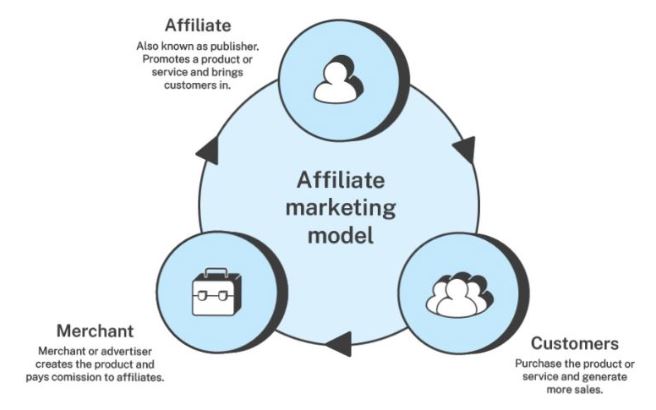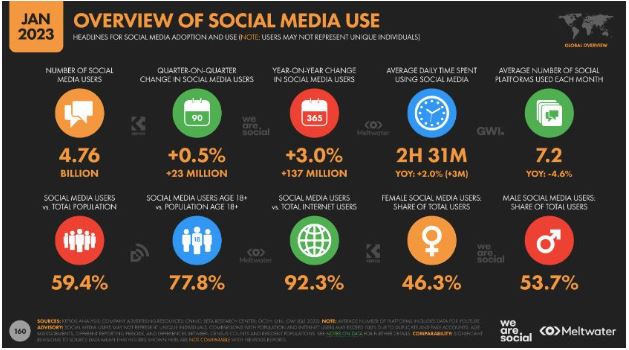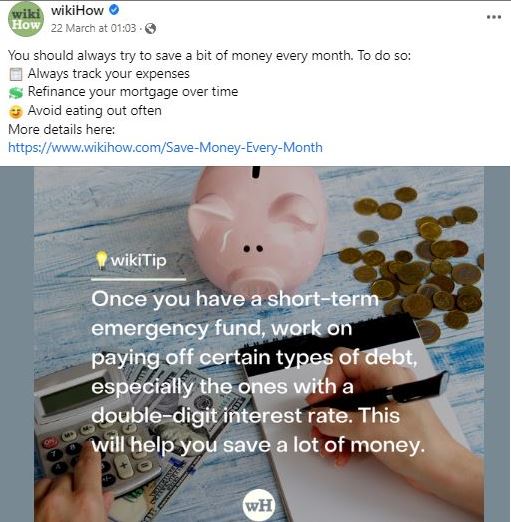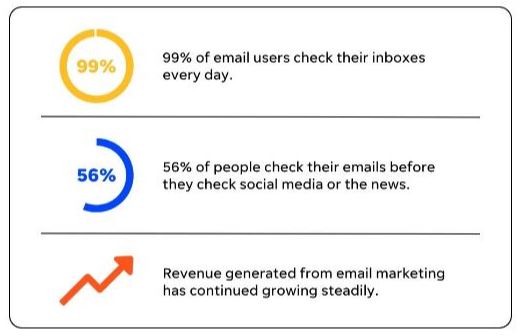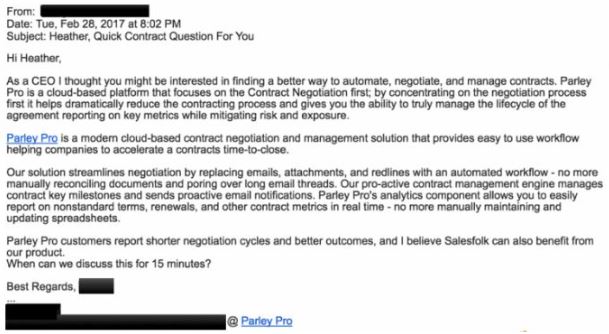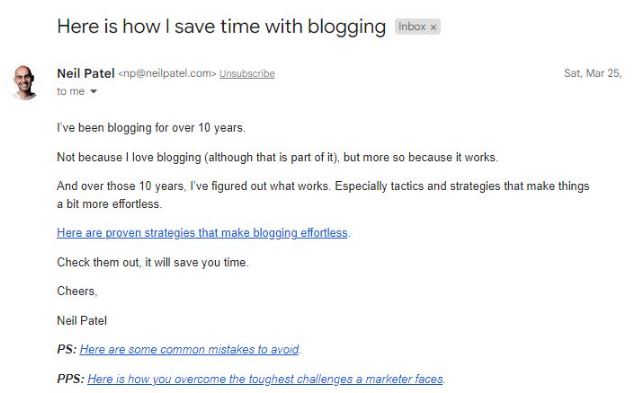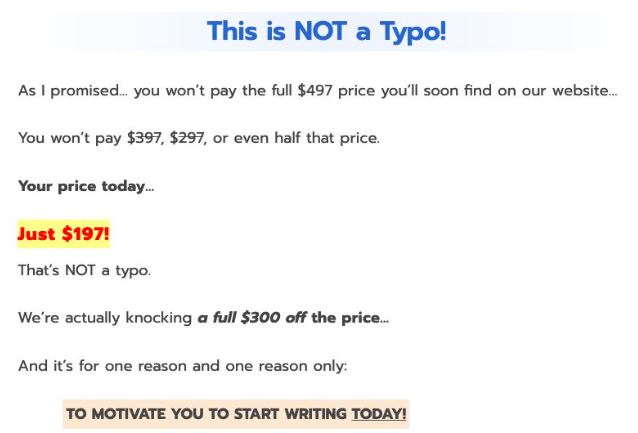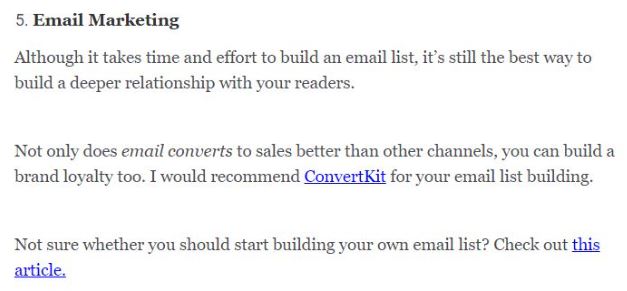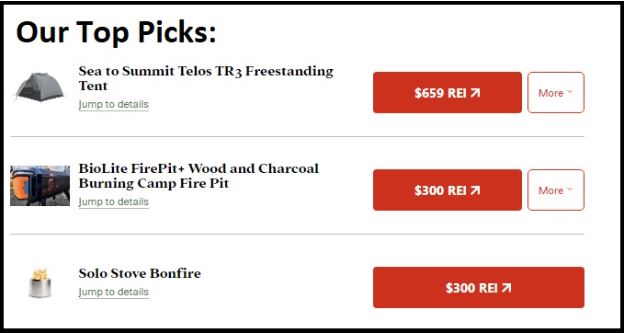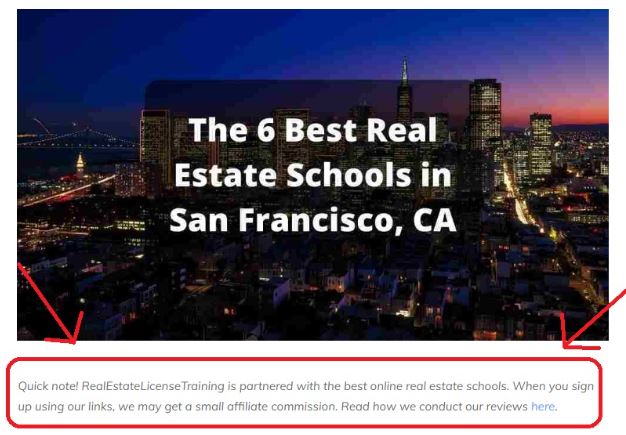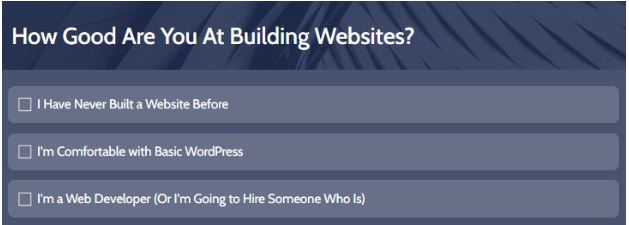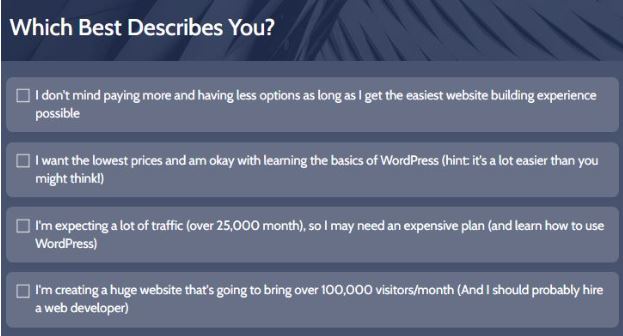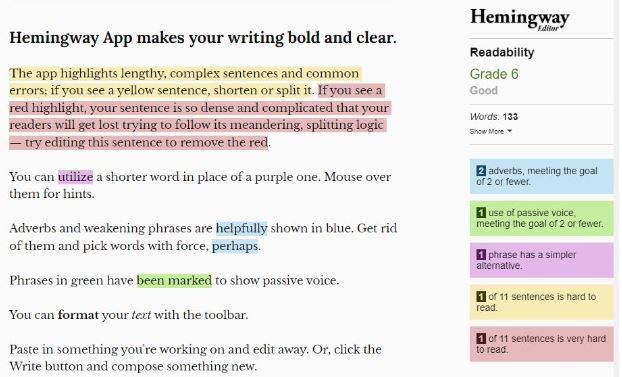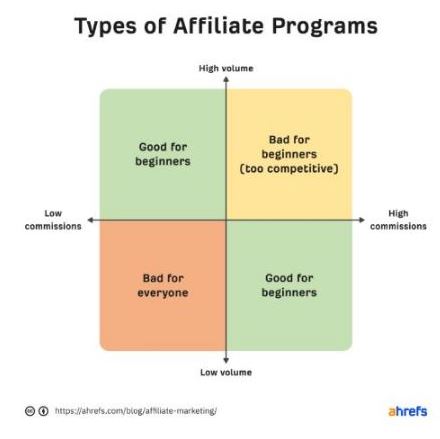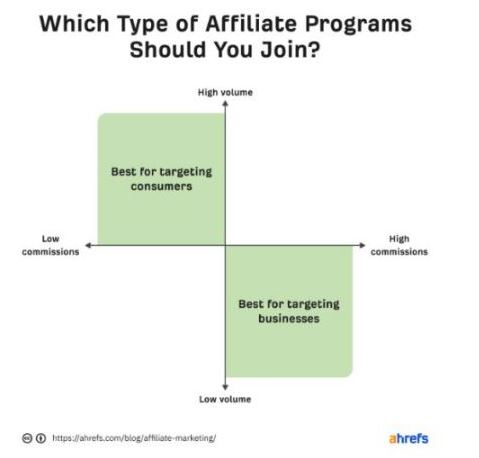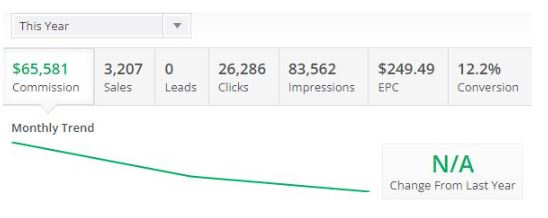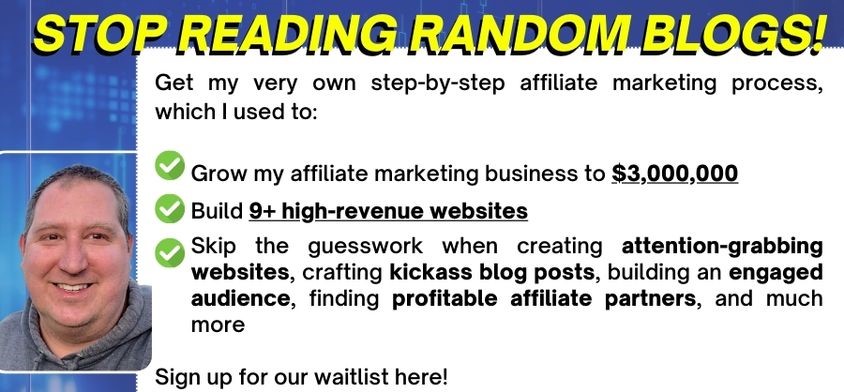I wish I knew what I know now.
Then maybe I wouldn’t have to go through all the learning curves.
But hey, at least I can use my experience to help you.
Which is exactly what I’m going to do here.
So come along as I give you a step-by-step guide on how to start an affiliate marketing blog, recommend some great affiliate tools and programs, tell you what mistakes to avoid, and so much more.
TRIGGER WARNING!
This is NOT a get-rich-quick-solution.
Crash Course: What is Affiliate Marketing?
We’ve all seen modern-day influencers promoting this and that.
You can’t miss them.
Take Cristiano Ronaldo for instance — a Portuguese soccer player that tops the list of the most followed person on Instagram.
Source: adlibweb.com
He partners up with Nike.
He promotes Nike products (in this case, soccer shoes) to his fans.
The fans rush to buy the same cleats as their idol.
Nike gets LOTS of sales.
Ronaldo earns a HUGE commission.
In a way, that’s like affiliate marketing.
Okay, maybe not on THAT big of a scale — then again, who am I to say?
You partner up with a company that sells a product.
You’re given a unique affiliate link.
You promote that link in your blog.
Someone comes along and is convinced that they need the said product.
They click your affiliate link and purchase it.
The buyer gets the product.
The company gets a sale.
You earn a commission through your efforts.
For a visual picture, check out this affiliate marketing model.
Source: affiliatemarketingbuzz.com
How to Start An Affiliate Marketing Blog – The 7 Steps to Success
Okay, let’s get to the gist of it.
Here are the 7 steps to start an affiliate marketing blog:
- Choose something you love
- Create a website
- Write mind-blowing blogs
- Bring the crowd in
- Research what products you can sell
- Join affiliate programs
- Promote wisely
I’ll go over them one by one.
And I’ll give you some personal tips and tricks along the way.
Step 1: Choose Something You Love
Have you ever tried working in a job you hate?
Maybe you’re still there now.
Waking up and facing another day at the office will always be a burden.
Such is life.
And this will be no different if you create a blog around something you have ZERO interest in.
This leads me to my main point here.
CHOOSE. A. NICHE. YOU. LOVE.
Remember, you’re in it for the long run.
If you’re passionate about your niche, you’ll be able to persevere.
Another thing.
It’s a good idea to be specific.
Take me for example.
I’m very passionate about cars — but that’s way too broad.
So instead, I can choose to focus on classical cars — now that’s a bit more specific.
I can dig even deeper and pick a specific type of car, like a classical Ford Mustang.
I tell you, all classical Ford Mustang lovers will be thrilled to have a whole blog dedicated to it.
Step 2: Create a Website
“IT’S SO EASY TO START BLOGGING! —
STEP 1. CREATE A WEBSITE…”
Umm…
I don’t know about you, but that doesn’t sound too easy.
When I created my first website, I was SO confused and overwhelmed.
No, I’m not trying to discourage you.
Just being honest.
But don’t fret – I’ve created an easy-to-follow video that walks you through the whole process of creating an affiliate marketing website with WordPress.
True or false: You can’t have a blog without a website.
TRUE!
Now, I didn’t say you have to have YOUR OWN website.
Some platforms, like LinkedIn Articles and Medium, allow you to post blogs there. Not just that, allow you to promote affiliate links, too.
But personally, I’d say create a website.
You can’t go far with these platforms anyway.
And that’s what we want — to go far with your affiliate marketing blog.
Step 3: Write Mind-Blowing Blogs
I’ve been going around and checking the other “how to start affiliate marketing” articles.
And here’s what I noticed.
Most put joining an affiliate program before actually growing your blog.
That causes problems.
First of all, you’ll be lucky if an affiliate program accepts you without any followers.
Secondly, you might fall into the hole of being too salesy in your blogs.
Remember, it’s a long journey to success.
So before you even think about promoting affiliates, you should focus on writing and posting mind-blowing blogs.
Content that leads to trust and a strong, lasting relationship with your audience.
You can’t just expect a stranger to trust you…
You need to build a friendship first — then they’ll trust you and the products you recommend.
Have no idea how to write an awesome blog?
I teach you all the tips and tricks here.
Step 4: Bring the Crowd In!
Without an audience, your affiliate marketing blog will fail.
There.
I said it.
But there are 7 million blog posts published every day!
How in the world do you draw attention to YOUR blog?
Here are 4 ways to bring the crowd in…
-
Double Down on SEO
Do you cringe in fear at the terms ‘SEO’ and ‘keywords’?
You’re not alone.
Unfortunately, it’s not something to ignore.
Quick fact: people online are always looking for the fastest results.
They won’t bother scrolling to the lower websites — let alone those on the second page.
That’s why you want to be at the top of Google’s SERP.
And SEO and keyword strategies can take you there.
Yes, yes.
I know what you’re about to say.
But don’t worry, I’ve created a simple but comprehensive lesson for both SEO and keywords.
-
Social Media is Your Friend
Fun fact: there are 4.76 billion social media users around the world!
Source: smartinsights.com
That’s INSANE!
More than half the world’s population is milling around on social media.
And you know what that means?
You’re sure to find LOTS of people that are waiting for you to sweep them off their feet.
Here’s how wikiHow uses Facebook to get people to their blog:
Source: Facebook.com
If you’re someone who’s trying to save some money, you’ll be clicking on the link like your life depends on it…
…even if you had no intention to read about this when you entered Facebook.
But don’t get me wrong.
Social media campaigns mean extra work — on top of searching keywords and typing out awesome blog posts.
If you don’t have time to figure out the know-how of social media for affiliate marketing, check out my lesson.
-
Emails Are Not Dead
Yup!
Just look at these stats:
Source: localiQ.com
Now, with emails, this is more for bringing people back in — informing them about new blog posts they’d want to check out.
Because no matter how much they love your blogs — they’re not going to visit every day.
Which is why you need to remind them.
Here are some quick ways to build an email list:
- Sign up for an email provider
- Add a signup pop-up on your homepage
- Add an email sign-up form on every page
- You can add these signup forms on your social media, too
- Collect emails from your friends or at events
Please.
Don’t ever send emails like these:
Source: salesfolk.com
Not only will the person not bother to read it — they’ll be unsubscribing from your email list so fast.
Instead, you can go along the lines of something like this:
-
Pay for Traffic
Is this an easy way out?
Maybe.
Is this the best way to get traffic?
Maybe not.
Here’s what Ahrefs has to say about paid traffic:
Source: ahrefs.com
Yes.
Paid ads are great if you join affiliate programs with high commission rates — and you know how to convert sales.
It’s also great if you’re already earning a steady income.
But if you’re new, or join lower commission programs, paid ads might see you spending more than earning.
Step 5: Research What Products You Can Sell
NOW you can start monetizing.
Rule of thumb: Always promote products that are relevant to your niche.
Let’s say you follow this excellent blog about your favorite video game.
You’re there to read about news, get codes, learn strategies, and whatnot — you’re definitely not there to buy stainless steel cookware.
Unless you were thinking of getting stainless steel cookware and this is your sign.
But let’s say the blogger promotes the latest version of the game. I’m sure you’ll be dying to get your hands on that.
Well, you want the same reaction from YOUR readers.
I know, I know.
A lot easier said than done, right?
This is why research is the KEY.
Suppose you chose clay pottery as your niche.
Try looking for physical, information, or service products.
Let me give you an example.
- Physical products: you can partner up with companies that sell pottery items.
- Information products – maybe there’s someone that offers a course on how to make your own clay pottery. Don’t you think your band of clay pottery lovers will want to give that a go?
- Service products – If you’re passionate about clay pottery, what kind of services do you want? Maybe it’s a pottery studio that you can rent? Maybe it’s a company that will create personalized pottery for you.
Step 6: Join Affiliate Programs
It’s time to partner up!
A lot of affiliate marketers rely on affiliate networks.
A reliable network is sure to have HUNDREDS OF THOUSANDS of programs to join — and yes, that’s for any and all niches.
To help you get started, here are some of the networks that I personally use and love:
You can also do a more personal approach.
Say you’ve been loving this amazing makeup brand.
You use it all the time.
And you NEED to recommend it to your makeup-loving audience.
Wouldn’t it be great if you can earn a bit of money from that, too?
Well, you can research if the brand has its own affiliate program.
If not, you might even want to reach out to them — say that you’ll promote their products to your audience for a small commission.
Who knows, they just might accept the offer.
Step 7: Promote Wisely
It’s one thing to write a blog…
It’s quite another to write a blog that promotes a product.
Case in point, you have to get your audience to click on your affiliate link.
How do you do that?
-
Avoid Shoving Products in People’s Faces
Do you like it when a salesperson follows you around and forces you to buy this and that — even after you told them you’re just there to browse?
No, you don’t.
You’ll get annoyed and walk out.
The same is true for YOUR visitors.
So here’s what NOT to do (although this works great for a service page, it’s just annoying in a blog post):
Source: AWAI
Subtly promote your affiliate products. Like this:
Source: thinkmaverick.com
-
Know Where to Place Your Links
Let’s say you’re writing about ‘camping gear every camper must have’.
Don’t put links out of context:
| Today, I’m reviewing the best camping gear that every camping enthusiast must have in their packs. |
Trust me, people won’t think twice about clicking those links.
Another mistake is adding a link every time you mention the product.
| Product name 1 is the best camping gear for big groups. Product name 1 allows you to pack light even if there are 10 of you. The best part is that product name 1 is super affordable! |
Now that’s just annoying.
It looks very spammy, too.
Instead, PLACE LINKS IN CONTEXT AND AVOID OVERDOING IT.
| Today, I’m reviewing the 3 best camping gear that every camping enthusiast must have in their packs. These are product name 1, product name 2, and product name 3. |
The way I do it is to place the links the first time you mention the product.
Link it once or twice in the body of your blog.
And finally, link it again at the end of the post.
-
Callouts Attract Readers
What if someone is just quickly scanning your blog for answers?
Callouts like this will surely catch their eye:
Source: themanual.com
Quick tip: Always make it easy for your readers to find the answer they’re looking for.
5 Mistakes to Avoid as an Affiliate Marketer
I’ve been doing affiliate marketing for 12 years now.
And I admit that I’ve made a lot of mistakes…
Common mistakes that affiliate marketers can get suckered into.
Like that time I actually believed in the get-rich-quick garbage.
Or that time I was all about earning, earning, earning — not caring what products I was promoting.
Long story short: I had to break my habits and change my ways to become a more trustworthy (and successful) affiliate marketer.
I don’t want anyone to have to go through all that.
So let me list down 5 mistakes that every affiliate marketer should avoid.
1. Never Forget to Follow the Rules
Yes, affiliate marketing is legal.
But only if you stay within the rules.
As set by the Federal Trade Commission (FTC), all affiliate links must be disclosed.
Here’s an example of how I disclose my affiliate links:
Besides that, you must also follow the guidelines set by different states and counties.
The last thing you want is to get in trouble for this.
2. Always Read The Fine Print
Get this — every affiliate program is different.
They have different rules.
They have different commission rates.
They have different payment methods.
They have different cookie durations.
If you don’t read the fine print, you might be confused why your affiliate links are suddenly banned.
Or why the commission was not given to you when the purchase was made through your link.
Yikes!
Reading the ‘terms and conditions’ will go a long way in avoiding these scenarios.
3. Don’t Just Promote Any Product
Remember what I said about building a relationship to gain trust?
Well, all your efforts will go to waste if that trust is broken…
And believe me, in the affiliate marketing world, that can easily be shattered.
Suppose you promote a product that you promise will change the reader’s life…
The reader excitedly buys the product…
…Only to find that it’s very low-quality and does not fulfill your promise at all.
Do you think they’ll trust the other products you recommend?
I think not.
Quick tip: it’s best to promote products that you use and love.
Not only will you be confident that it’s a great product — you can go into deep detail about your experience with it.
If it’s a product you don’t know, go ahead and purchase it — or look for trustworthy reviews.
When I promote online real estate schools, I make sure to buy their courses and include a video review of what it looks like inside:
It’s all about recommending the best to your readers (because they deserve the best).
I go into detail about how to write a product review here.
4. Don’t Ignore Old Content
So you put all your attention on your blog for 6 months.
You do all the right things.
And some posts rank in Google!
You think, “That’s done and dusted”.
You pat yourself on the back and move on to the next thing — maybe another blog that you hope will be just as successful.
That sure sounds a lot like me in my earlier days.
But that’s a mistake.
Never ignore your old content (especially if it’s already ranking!)
Eventually, new and better blogs will come up and replace yours.
Your posts will start to go down the rankings — traffic will significantly drop.
All that hard work will be wasted.
Did you know something as simple as updating old content will keep it at the top?
No, you don’t need to rewrite everything.
Just update some information, swap out products for better ones, add in new products, change the images, etc.
5. Remember that It Takes Time to See Results
Instant profits.
Instant wins.
Instant success.
That’s what a lot of newbies crave.
And if they don’t get it, they quit.
Always keep this in mind — affiliate marketing blogs require hard work, determination, and perseverance.
Give it a year and a half to start seeing the fruits of your labor.
Several more years and you’ll start enjoying passive income.
I’m not saying this to discourage you.
On the contrary, I’m saying this so that you won’t get discouraged.
If you know the journey is long (but totally worth it), you’ll be able to push through in the most difficult times.
My Recommended Affiliate Marketing Tools
It’s hard to stay on top of everything.
Researching new keywords…
Typing out blog post after blog post…
Keeping track of your affiliate campaigns…
Finding more affiliate programs to join…
Updating your social media…
Hear this.
You don’t have to do it alone.
Use all the tools available to you.
Tools that will lighten your burden.
Here is a video review of my most recommended affiliate marketing tools:
For the quick answer, these are the tools that have helped me greatly…
KWFinder
I don’t know about you, but finding easy-to-rank or high-traffic keywords is always the hardest part.
Well, with KWFinder I can quickly scan the best keywords for a specific topic.
Trust me, it will help you save LOTS of time.
Yes, I know it can be confusing at first.
This is why I made a full video review below:
Ahrefs
Looking for a comprehensive SEO tool?
I personally love Ahrefs.
And lots of successful affiliate marketers will agree with me.
Here, you can enjoy features like:
- Keyword finder
- Backlink analysis
- Site audits
- Competitor analysis
- And so much more!
Though mind you, it’s a bit on the expensive side.
But it UPS your SEO game to a whole new level.
So I highly, highly, recommend getting it.
Yoast SEO
Ahrefs is for overall SEO.
Yoast focuses on technical and on-page SEO.
Here are some features I love about Yoast:
- Shows you the preview of your blog on Google
- Recommends the perfect length for your title and meta description
- Makes it easy to do advanced WordPress coding
- Shows the blogs readability score
- Makes the technical side of SEO super easy
The list can go on and on.
Thrive Themes
This is NOT just another website builder.
For me, Thrive stands out with its user-friendly quiz builder.
That’s right.
I didn’t have to struggle with coding to create this SUPER helpful quiz guide:
Quizzes can help your readers get the fastest answers in a fun way.
And Thrive can help you with that.
Hemingway App
As you type away as fast as you can, it can be easy to let things slip.
Grammar…
Readability…
Engagement…
Hemingway App is a writing tool that can help with all that.
You’ll love that it uses color codes to warn you if your sentence is too long, help you replace big words with simpler ones, show you if you’re using excessive adverbs, etc.
Source: hemingwayapp.com
Best Affiliate Programs for Beginners
So you have no idea what affiliate program is good for beginners.
Here’s what Ahrefs suggests:
Source: ahrefs.com
Okay, there are lots of great programs for beginners that hit Ahrefs’ suggestion.
But if you’re asking for the best, I can only point you to Amazon Associates.
A Quick Look Into Amazon Associates
This is by far the biggest affiliate program today.
I mean, you can get an affiliate link for — get this — ANY product Amazon sells.
You read that right.
And sure, the commission might be low.
But did you know that you get a commission for everything a person purchases?
What do I mean?
Let’s say you promote a cozy dog bed on your dog blog.
Someone comes along and purchases the bed through your link.
You earn a small commission.
However, what if the person decides to add some chewing toys and cute doggy clothes to their cart?
You earn a commission for that, too!
So instead of, say, the $1.50 you earned from your affiliate product, you’ll earn maybe $40 from the other sales (depending on how much the person bought).
Sounds great?
Click here to get started with Amazon Associates.
No.
Amazon is not my affiliate partner.
Just a great program that’s PERFECT for beginners.
Frequently Asked Questions
Got some questions before I go?
I’ll try to answer them by going through the most frequently asked questions about affiliate marketing blogs.
Do Affiliate Blogs Make Money?
Here’s one question everyone asks.
Well, if we’re talking about the most successful…
John Chow earns around $360,000 to $500,000 a month from his blog alone.
Pat Flynn earns an estimated $145,000 a month — with 80% of his incoming coming from affiliate marketing.
Finch Sells earns almost $36,000 a month — and he’s still in his early 30s!
What about the average affiliate bloggers?
STM Forum conducted a “how much money do you make” poll for affiliate marketers.
Here were the results:
Source: authorityhacker.com
As for me, here’s how much I earned so far in 2023 alone (January to March):
What I’m trying to say is, an affiliate marketing blog has BIG earning potential.
And the more work you put in, the more income you enjoy.
Should I Start an Affiliate Marketing Blog?
I’ve been going on and on about how affiliate marketing is not a walk in the park…
Which might get you thinking, “is it worth it?”
I can honestly say — YES!
Think about it…
You don’t have to be stuck in that 9 to 5 job.
You can choose any niche you’re passionate about — which for me, is the biggest plus.
It’s low risk — unlike starting your own business.
If it doesn’t work out for you, the only thing you’ll waste is your time.
And lastly, think about the HUGE earning potential.
If you start earning passive income, you’re FREE to do whatever hobby you want.
Do You Need a Blog to Start Affiliate Marketing?
No.
Any platform where you can promote affiliate links will do.
Take Facebook, Instagram, or Youtube for example.
You can even place your affiliate links on someone else’s blog.
Or, you can ditch all the work and promote through ads — although you will have to have a budget for that.
But…
Even if you decide to prioritize other platforms, it’s always best to have a blog.
I mean, why put your “business” in the hands of someone else?
Why not have YOUR OWN platform?
Can Beginners Do Affiliate Marketing?
OF COURSE!
Every successful affiliate marketer started out as a beginner.
So why can’t you?
Sure, it’s going to take a lot of time and effort — and a lot of learning, too.
But if you’re persistent, you’ll be able to experience the joy of affiliate marketing.
Are You Ready to Get Started with Affiliate Marketing Blogs?
Phew!
That was a lot!
And I wish I could cover more.
But for now, I’ve given you the basics on ‘how to start an affiliate marketing blog’.
I added in all the tips and tricks that I’ve learned along the way.
All the mistakes to avoid.
All things you can expect.
Every affiliate marketing journey is different.
But I can promise you this — if you put in the hard work, you will see success.
Best of luck!
If you want to learn more, you can check out my other blogs here.


